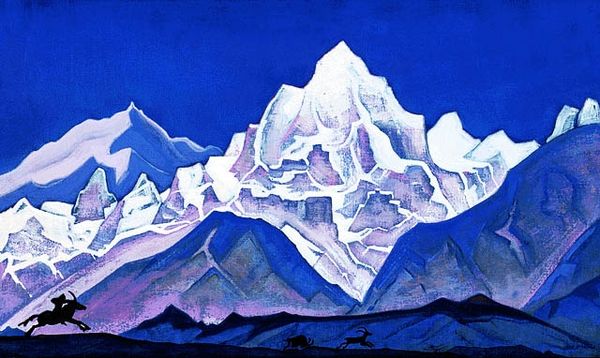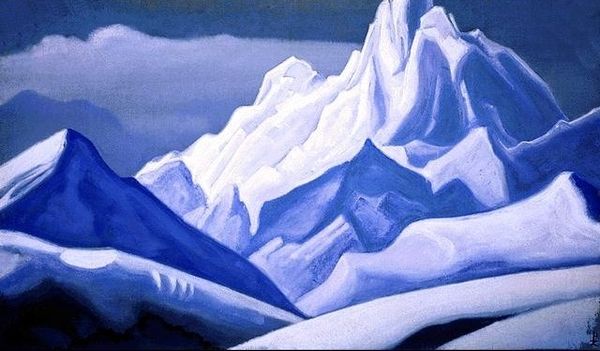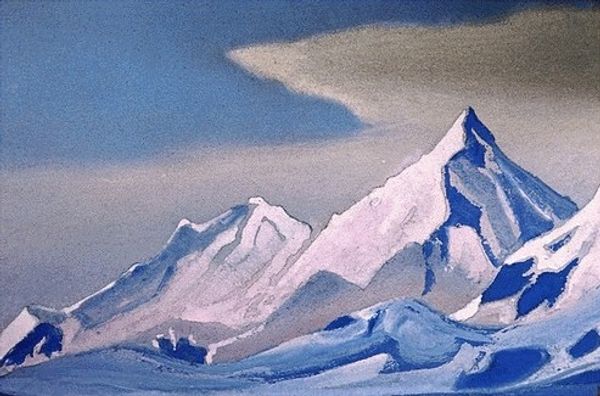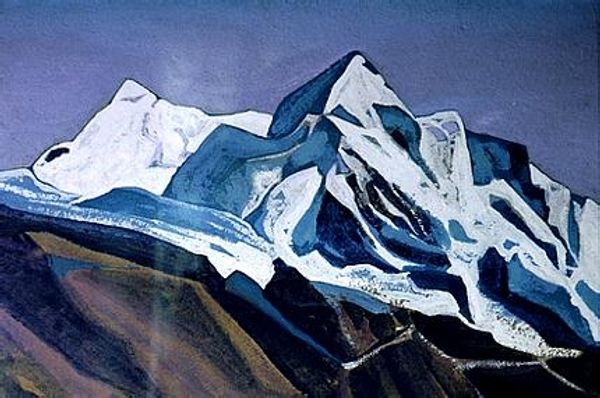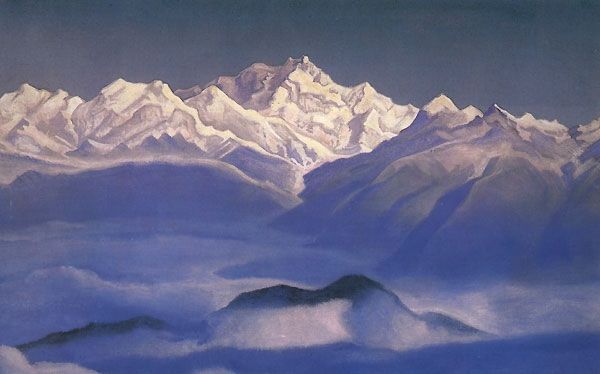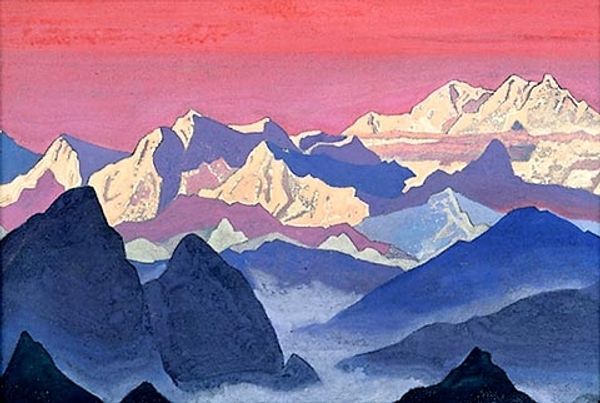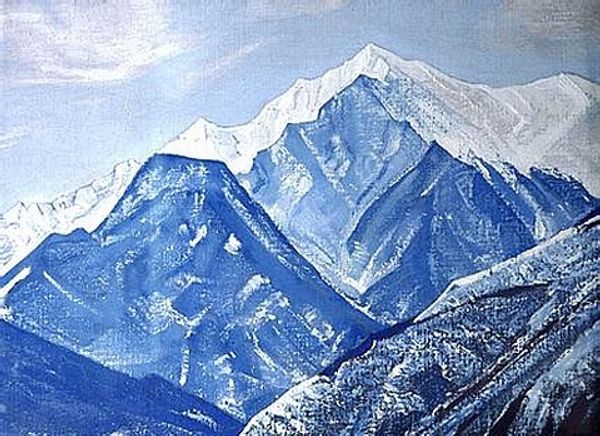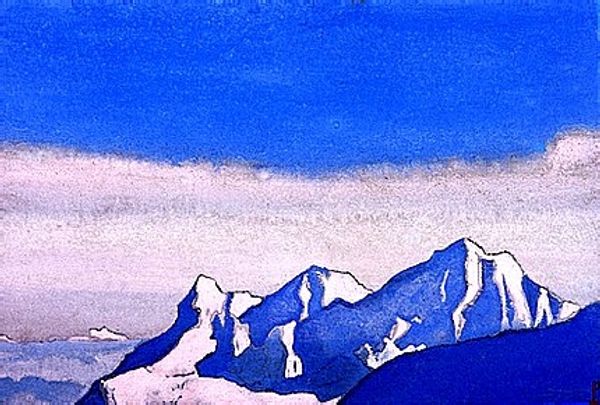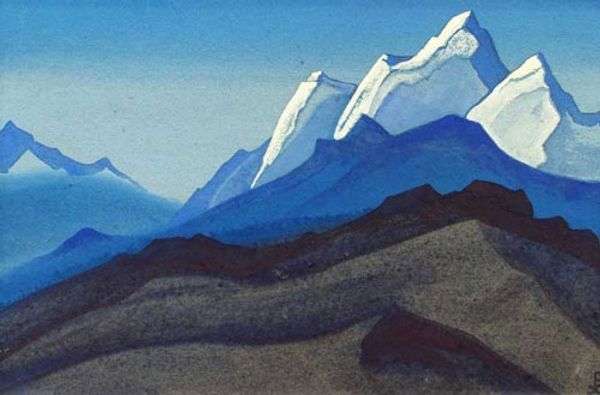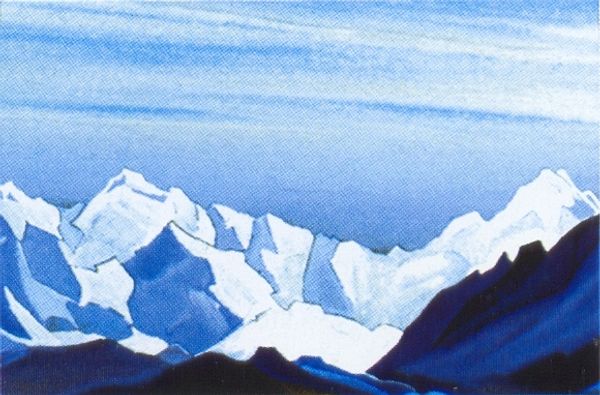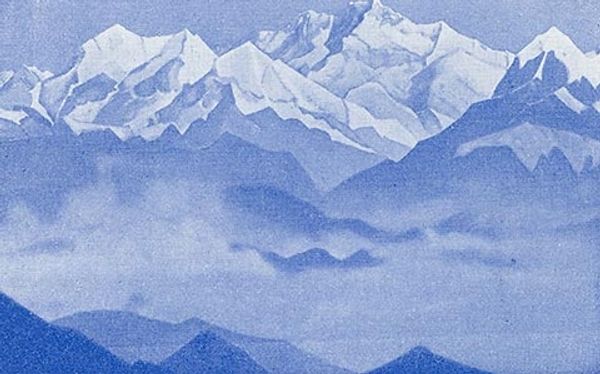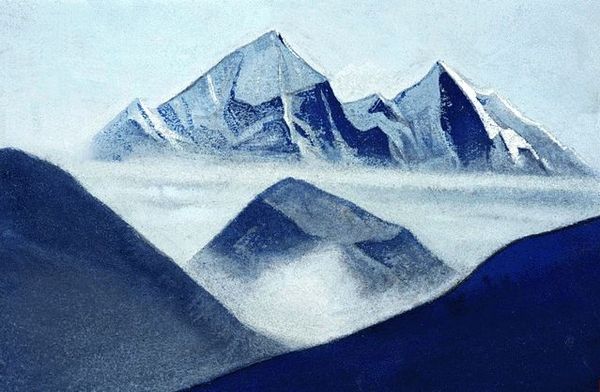
Copyright: Public domain
Editor: So here we have Nicholas Roerich’s “Kangchenjunga,” painted in 1924, using oil paints. The entire composition is cast in these otherworldly blues, almost like viewing the Himalayas through a dream. I'm struck by how still and monumental it feels. What catches your eye in this work? Curator: Ah, Roerich! For me, this painting hums with a deep spiritual resonance. The cool blues and whites are incredibly evocative, but not just visually; Roerich intended to convey a sense of the sacred, a reverence for the awesome power and presence of nature. Notice how the mountain seems to float above the clouds; the border between the earthly and ethereal is almost nonexistent. Does it perhaps echo a similar feeling you get? Editor: Absolutely, I can feel that ethereal quality! I suppose the symbolism aspect is very on the nose here. Did he visit Kangchenjunga himself? What did it represent to him? Curator: Roerich traveled extensively through the Himalayas; they weren't just pretty landscapes, they were powerful spiritual sites. He was deeply influenced by Theosophy and various Eastern religions; the mountain represents something beyond itself— a place of pilgrimage, inner awakening, maybe even cosmic harmony. It's interesting to me how he blends romanticism, where nature is sublime and overwhelming, with this kind of deeper symbolic layer. Is it sublime for you too? Editor: Definitely. I think I was getting too caught up in the obvious mountain and landscape. I can see how this is far more meditative and symbolic. Curator: Exactly! It’s not merely a portrait of a mountain, but of a state of mind. Perhaps seeing is believing. Editor: Thanks, I’ll be thinking of it as less of a picture and more like a poem. Curator: Couldn't agree more. Art whispers secrets when we pause and simply feel.
Comments
No comments
Be the first to comment and join the conversation on the ultimate creative platform.

